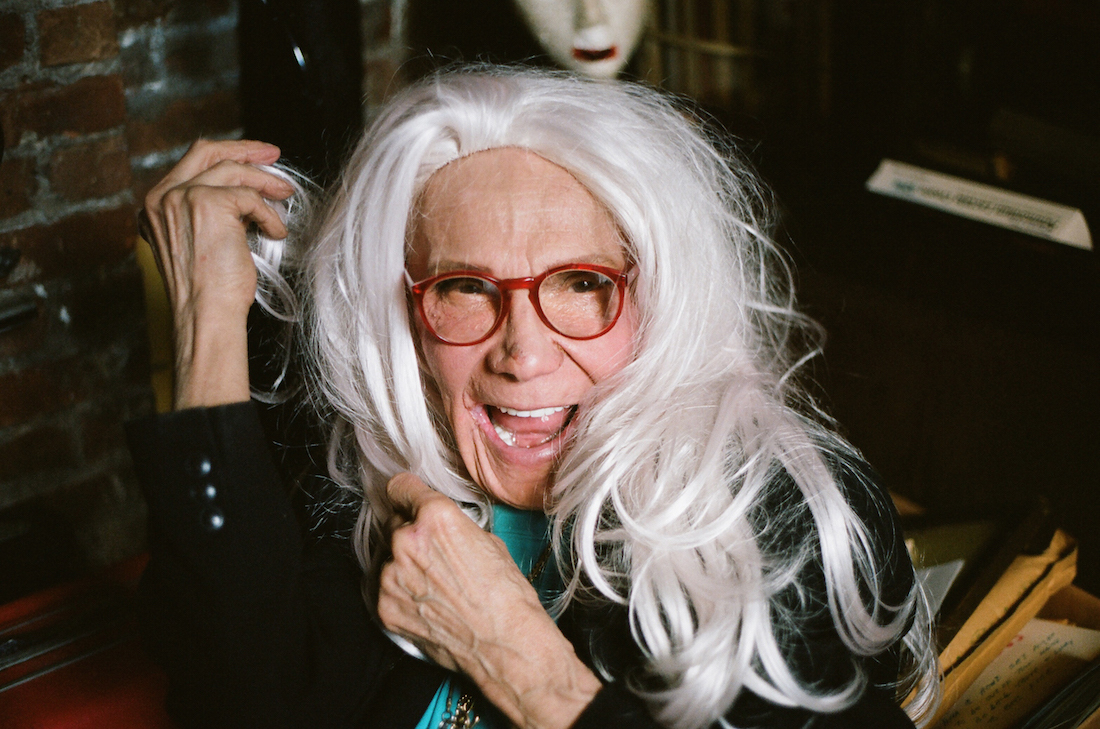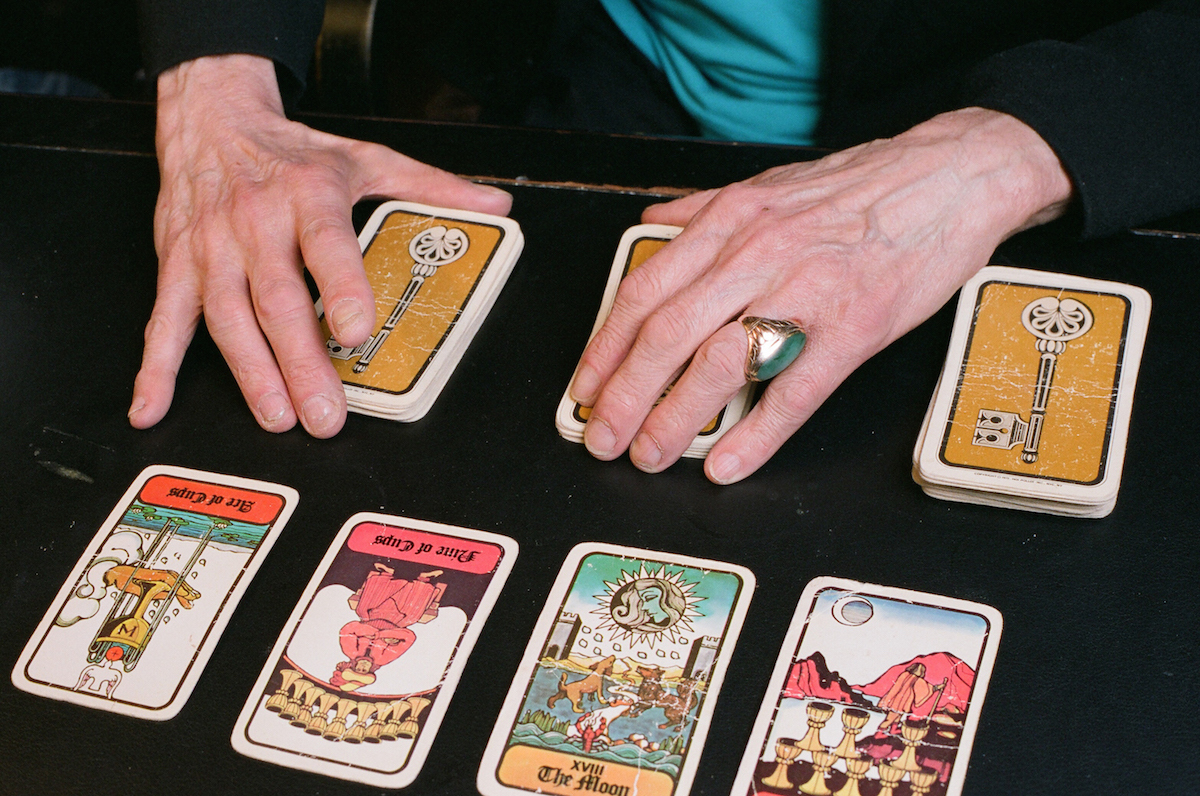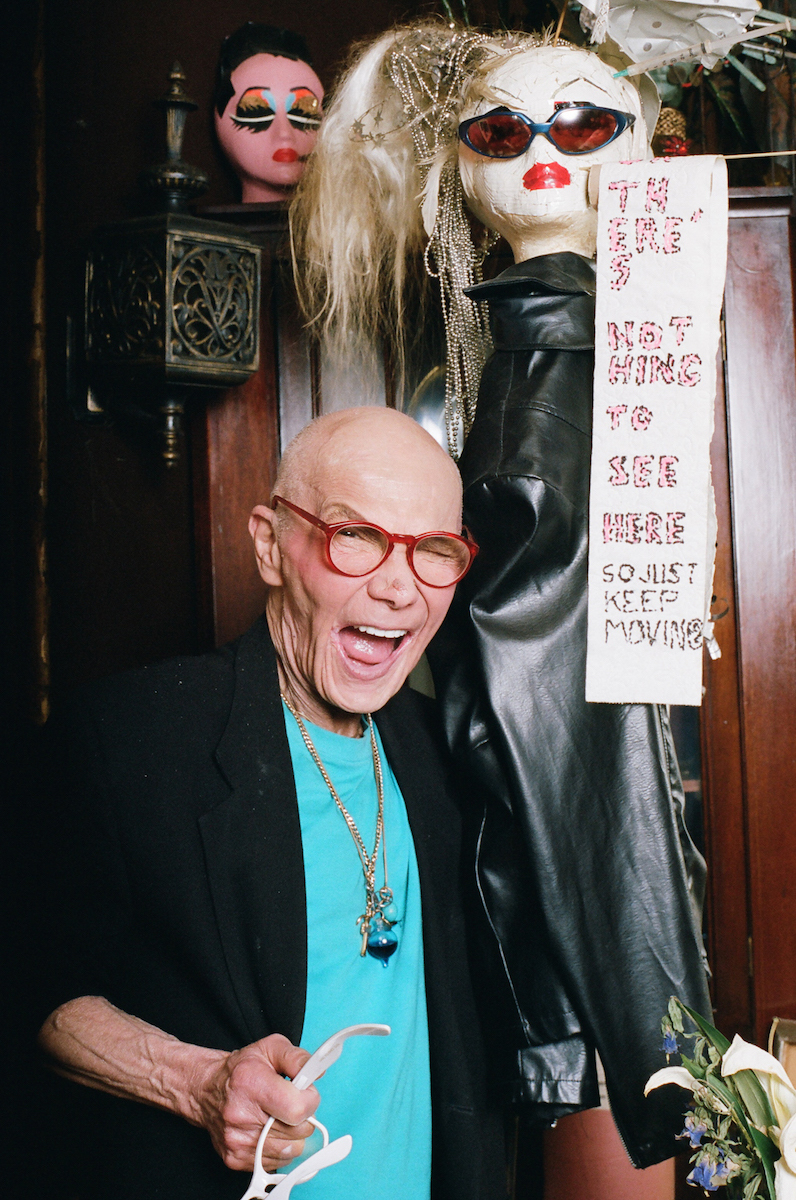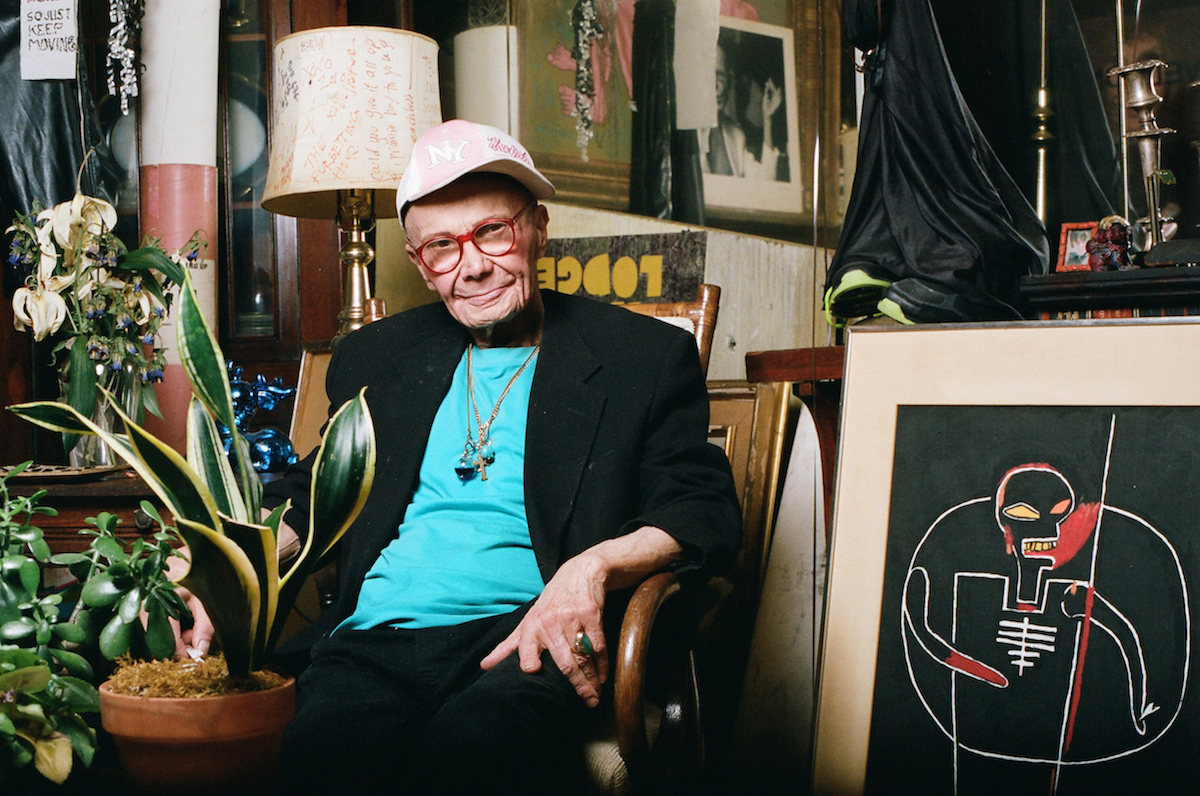Walking into the Upper East Side apartment of Mother Flawless Sabrina, aka Jack Doroshow, is like entering a time capsule. Even before seeing her, tucked away listening to This American Life at her desk across the room, her presence feels monumental. Ornate furniture from her time in Paris lines the walls, and every surface is covered in art and ephemera collected since she moved to New York in the late 60s. It’s a catalogue of all the people she’s touched in her life, and that list seems infinite. Portraits of her by Diane Arbus hang next to a poster from a recent Bruce Weber-shot Barneys campaign in which she appeared, and below them is a paint impression of performance artist Kembra Pfahler’s butt. There’s what appears to be a Basquiat leaning against the fireplace. And behind paintings and photographs, mostly stapled to the wall, is a covering of what she claims is “the first ever roll of ultra-suede” – given its name in that very living room by Truman Capote. It’s decadent.

In her lifetime, Flawless has been an artist, a muse, and an expert on homosexuality (consulting for films like Myra Breckinridge and Butch Cassidy and The Sundance Kid). Though she trained as a psychologist, she is probably best known for her role in the 1968 documentary The Queen, which follows the drag pageants she hosted across the country for over ten years at a time when drag was still illegal. The feat landed her over 100 felonies and the events were judged by the likes of Edie Sedgwick and Andy Warhol. Flawless is an icon.
Now, at 75 years old, her time is spent mostly in her home giving tarot readings, which she also gave at the recent Whitney Biennial, and mentoring a new generation of queer youth.
How did you get into tarot?
My grandmother used to give readings. She had a friend who was in the hospital and we used to read her cards for her. She taught me how to do it, and gave me confidence. My mom and grandma were really good about giving [people] confidence. Until the Whitney event with Zackary Drucker I’d never really read in public – just for friends and family. But it’s neat. It seems to work for people and that’s great.

Is reading for friends and family different from giving readings to strangers?
Not necessarily. I mean, the cards are just cartoons on cardboard, it’s really about the interpretation, and trying to find positive energy from them to apply to people’s lives. It’s a way to encourage people, to empower them.
Is there anything you’d suggest to help people find that power within themselves?
Most importantly, believe in yourself without question. You’re the boss, applesauce. Own it! I mean there are lots of things that make us want to externalize our identities, particularly in capitalism. But the reality is that your own life experience is your own. If I say red, we all agree that there is such a color but mine might have more brown in it, yours might have more orange, whatever. It’s these nuances that make people different. And you want to capitalize on them in your lifetime, take ownership of them.
How did you become involved with The Queen?
I started running drag contests in 58 or 59, because I thought it was becoming, relatively speaking, more mainstream. I was very anxious to remember [that time] and the people who were involved in the contests, because I knew it could all evaporate. It was about trying to capture a moment in history before it disappeared.

Did you think that it was just going to be a passing fad?
It’s so complicated. Maybe. I had no way of knowing that Ru Paul was going to come along and do something so marvelous and put the whole phenomenon in everyone’s living room. At that point it was [seen as] abnormal behavior, it was a mental illness.
Was there any kind of public uproar about The Queen? When Pink Flamingos came out it kind of shocked the culture.
When the film came out, I saw this strange sort of behavior where kids from one town would go to see the film in another town. They wanted to see it, but they didn’t want to see it locally.
They didn’t want people to see them seeing it?
Yeah. It was really funny, the theaters all seemed to do okay, but they had these alien audiences coming en masse from somewhere else. It was this strange phenomenon. But you’ve got to remember that The Queen was XXX-rated. It was treated as porn, and the worst kind of porn. But there’s nothing pornographic about in the film except, you know, in the minds of the people who decided to triple-X it.
When you were hosting pageants, you set yourself up as a mother figure for the other girls. Where did that role come from?
From the very beginning, from as soon as I learned about the phenomenon [of drag] and became interested in getting into it as a business. I was a psychology student at Penn, and I found the only material I could get my hands on, which was something called The Transsexual Phenomenon (this was a very long time ago!). It talked about having to be a non-competitive mother image, so at 18 or 19 years old I dressed up like a middle-aged lady and that’s where Mother Flawless Sabrina came from.

How do you feel about maintaining that role, and continuing to nurture young people?
Well, I mean it’s not hard! I was very well nurtured by my mom and my grandma. They were enormously important in a world that thought [drag] was a bad thing, and they were totally supportive. That taught me a certain aspect of nurturing. I don’t think that a guy necessarily can nurture, but I can certainly fake it! And I love the result of it.
What would you want to say to future generations of queer kids?
Well I’m looking at you!
But to the ones who can’t be here sitting across from you.
Show by example. Do exactly what you’re doing. Be inventive, be individual, get out there, perform as much as possible, amplify your presence and WORK!
If there’s any message to any of this, it’s for people to believe in themselves. I mean, the more peculiar or unusual we are, chances are the more important it is for us to have belief in ourselves. Without spontaneity and originality and all that stuff you can’t learn in school, we’d lose the most important people in our culture. Just saying.
Credits
Text and photography Mars Hobrecker and Leah James
